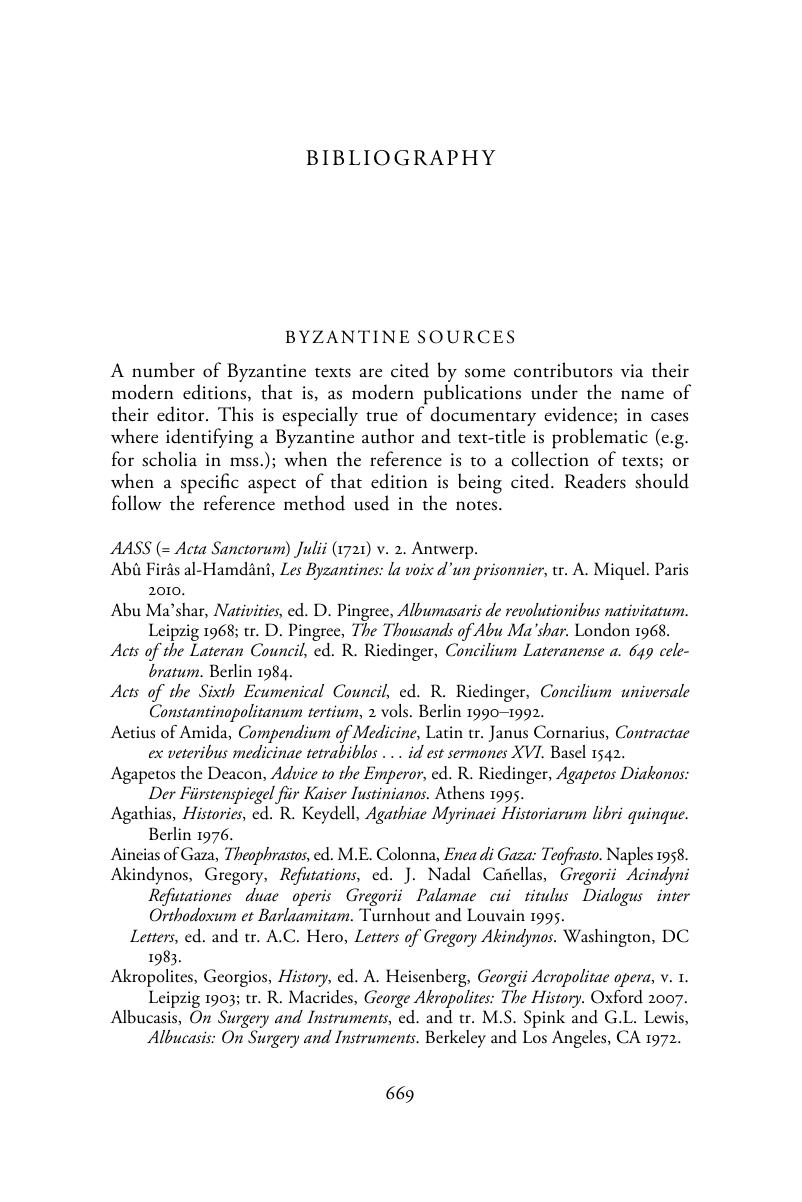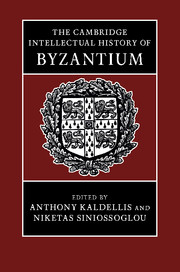Book contents
- The Cambridge Intellectual History of Byzantium
- The Cambridge Intellectual History of Byzantium
- Copyright page
- Contents
- Introduction
- Part I The Transmission of Knowledge
- Part II Sciences of the Word
- Part III Sciences of the World
- Part IV Philosophy and Theology in Middle Byzantium
- Part V Philosophy and Theology in Late Byzantium
- Part VI Politics and History
- Bibliography
- Abbreviations
- Index of Names
- Subject Index
- Endmatter
- References
Bibliography
Published online by Cambridge University Press: 17 September 2017
- The Cambridge Intellectual History of Byzantium
- The Cambridge Intellectual History of Byzantium
- Copyright page
- Contents
- Introduction
- Part I The Transmission of Knowledge
- Part II Sciences of the Word
- Part III Sciences of the World
- Part IV Philosophy and Theology in Middle Byzantium
- Part V Philosophy and Theology in Late Byzantium
- Part VI Politics and History
- Bibliography
- Abbreviations
- Index of Names
- Subject Index
- Endmatter
- References
Summary

- Type
- Chapter
- Information
- The Cambridge Intellectual History of Byzantium , pp. 669 - 763Publisher: Cambridge University PressPrint publication year: 2017

